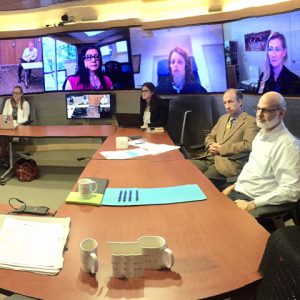May 31, 2017
 SESYNC Science Team Leads Effort to Increase Transparency in Endangered Species Recovery
SESYNC Science Team Leads Effort to Increase Transparency in Endangered Species Recovery
By Kate Weiss, SESYNC
On May 5, 2017, a National Socio-Environmental Synthesis Center (SESYNC) science team led by Leah Gerber and Mike Runge presented a tool to Senior Administrators of the US Fish and Wildlife Service (USFWS) that may help the agency prioritize endangered species recovery.
USFWS works to protect 1,275 threatened and endangered species under the Endangered Species Act, and each of these species requires an associated species recovery plan. These plans outline actions, recovery criteria, and other guidelines for species recovery. However, funding limits how many and which recovery plans each of the eight regions USFWS oversees may focus on.
Facing questions of how to best allocate these funds, the Endangered Species Act (ESA) Decision-making team has been working with USFWS researchers, academics, and others to create a decision-support tool to help inform this complex decision-making process. This tool, created over the course of three meetings at SESYNC was presented to USFWS at Arizona State University’s Decision Theatre in Washington, DC.
When integrated with the more nuanced decision-making processes that take place at the local, regional, and national level, the tool can help engage decision-makers and highlight how different kinds of funding allocations, choices, and value-systems inform or affect species protection.
Though this tool does not direct or make decisions, it provides decision-makers with greater transparency in the decision-making process. Moreover, it provides a foundation for a rich conversation across disciplines to help inform complex decision-making at the intersection of social and environmental systems.
The SESYNC and USFWS science teams will work with ASU’s Decision Theater and Center for Biodiversity Outcomes as they move toward possible implementation in the coming year.
SESYNC brings together the science of the natural world with the science of human behavior and decision-making to find solutions to complex environmental problems. To learn more about how SESYNC supports teams of researchers from academia, government, NGOs, the business sector, and more to accelerate collaboration leading to scientific discovery, visit SESYNC’s website.

